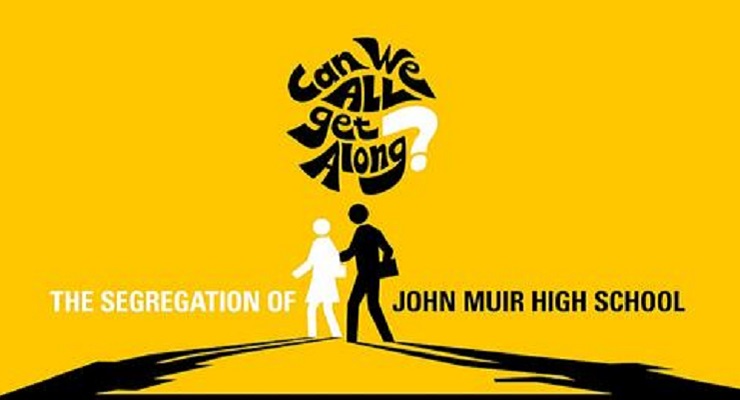
A local documentary on the segregation of John Muir High School and the Pasadena Unified School District will get its PBS SoCal debut on Thurs., Sept. 8 at 8:30 p.m. and Wed., Sept. 14 at 8 p.m. on KCET.
“Can We All Get Along? The Segregation of John Muir High School” follows Pasadena’s John Muir High School alumnus and filmmaker Pablo Miralles who returns to his formerly integrated school discovering things have changed since he graduated in 1982 and reflects on whether-or-not to send his own son to the school.
An earlier cut of the film was shown to a standing room only crowd at John Muir High School in 2019.
City Councilmembers, Mayor Terry Tornek and Congressperson Judy Chu attended that screening.
A screening of a PBS feature version is scheduled to be held at John Muir on Saturday.
The documentary was an official selection of New York’s New Filmmakers Festival, a Semi-Finalist in the DUMBO Film Festival, a nomination for Best Documentary Short by the Burbank International Film Festival and additional honors from the Telly Awards, the IndieFest Film Awards, Accolade Global Film Competition, the Toronto Lift-Off Film Festival and more.
This version of the film goes into a much deeper exploration into the social history of Pasadena, why it was perhaps that Pasadena was the place where the first court ordered federal desegregation happened.
The film also goes into a lot more detail as to what happened in the 21st century after several demographic changes.
According to Miralles, the new version contains interviews with current students and current teachers to describe what is really happening in our public schools and how people might have perceptions that are not accurate.
“The changes were made because PBS approached me after viewing my 49-minute festival cut and asked if I would be willing to turn it into a TV hour,” Miralles said. “So, after trimming the credits, which was a requirement of theirs, it meant I would add almost 10 minutes to the film which is almost 20% more content.”
Miralles said he learned a lot after releasing the film the first time, mainly through community screenings in and around Pasadena.
“I realized that there were a lot more stories to tell. So it wasn’t really a matter of, would I be able to fill that time? It was really what specifically would help the story and also what could I afford to do, because PBS doesn’t pay for that.
“They broadcast independent films, they do a lot of things for you. They help you with your marketing. They do a lot of the technical work at the end, but I had to reinvest all the money that I had made in the first version to make this feature length version.”
Miralles said his motivation was he wanted a version of the film that could be broadcast on TV.
“I had a much better chance of rolling it out across the entire country since a 60-minute film is something that they like to program, whereas a 49-minute film is an awkward length for TV,” he said.
According to Miralles, public schools continue to face challenges from people who oppose diversity.
“I think the current state of public education allows privileged parents to send their kids to what they consider better schools than those public schools that are considered Black and Brown schools.”
Lower birth rates have led to school closures, and increased housing costs have increased parental challenges.
“There’s not as many single income families, that is not necessarily a negative for the family, except that it means there’s not that extra parent who’s available to volunteer at the school or to work with the PTA, to do all those things that we perceived as ‘normal’ parenting,” said Miralles. “And fundraising now is much more difficult because so many public schools have higher percentages of the population from lower socioeconomic conditions. The number of parents who are able to give money are going instead to private or charter.”
Miralles said that the PUSD doesn’t have to do anything they aren’t already doing.
“What people fail to see is that we have excellent public schools,” Miralles said. “That it’s up to the parents to do the research to look past the numbers associated with standardized tests, which does not measure the quality of education in the school.
“All it says is the baseline socioeconomics of the population at that school. So, if you want to improve those standardized tests, have more people of higher socioeconomics attend that school. It’s up to the parents. Before they quickly decide where their children attend a school, they should actually go and visit their local public school.”














 0 comments
0 comments


